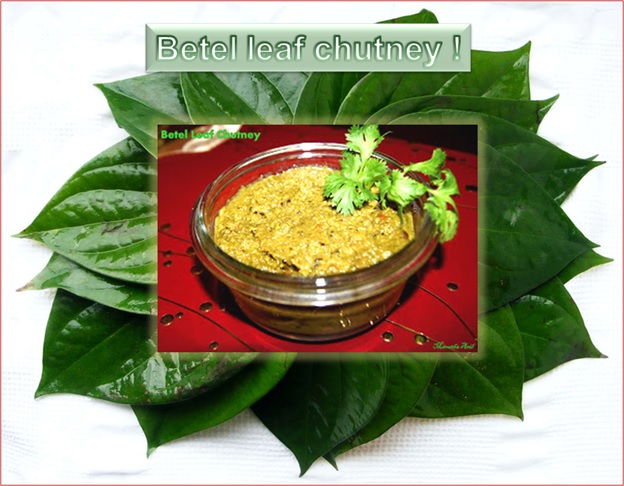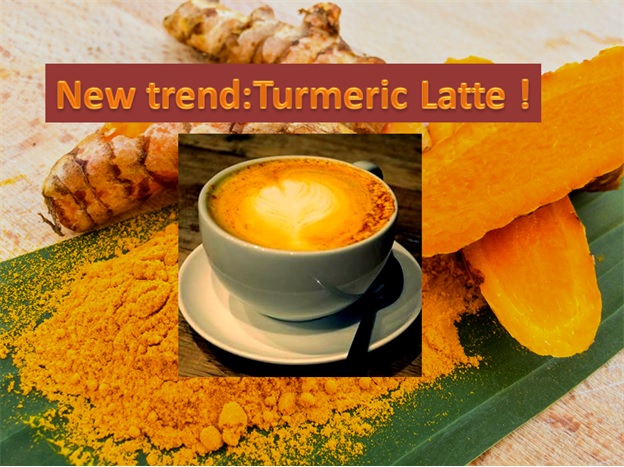
Betel Leaf (Paan Leaf) Chutney!
Recipe by: Mamatha Anil (http://bhakshyabhojana.blogspot.com/)
- Paan or betel leaves are part of Indian tradition and culture. On every festive occasion Indians use paan leaf which represents auspicious occasion and good luck. People are also fond of paan leaves and chew them with supari or betel nut (Areca nut). Chewing just the paan leaves has many health benefits.
- Digestion improvement: Chewing betel leaves takes a lot of effort and has a good impact on salivary gland. It stimulates the release of saliva which is needed for digestion.
- Removes bad breath & odor: Chewing betel helps to reduce bactericidal effects on bad breath and odor.
- It is an aphrodisiac: Betel leaf is known to have aphrodisiac !
- Warts removal: Ayurveda uses betel leaves in treating warts. It not only removes warts but also the scars!
- Boils cure: Warmed betel leaves coated with castor oil can be placed over the boil removes boil.
- Anti-diabetic: Extracts of betel leaves are known to control blood sugar levels.
- Cough control: Combination of betel leaf and honey is helpful in reducing cough and removing phlegm.
- Headache and stomach ache reliever: Betel leaf is also known to have analgesic properties. Warm beter leaf and apply castor oil and place it on the area where it is paining.
- Cures constipation: Stalk of betel leaves dipped in castor oil, when introduced in the rectum, effectively relieves constipation. Chewing betel leaf also supplies much needed fiber and helps to overcome constipation.
Here is a simple and delicious recipe of green chutney that one can make using betel leaf.
Ingredients:
- Betel leaves 6-10
- Chana dal/Bengal gram 1-2 tsp
- Urad dal/black gram 1-2 tsp
- Curry leaves 2 strands
- Coriander leaves (chopped) ½ cup
- Green chilies 2-3
- Dry red chilies 2
- Garlic cloves 4-6
- Grated coconut 2-3 tsp
- Cumin seeds ¼ tsp
- Jaggery 2-3 tsp
- Tamarind lemon size
- Mustard seeds ¼ tsp
- Asafetida pinch
- Oil
- Salt
Method:
1. Wash coriander, curry and betel leaves.
2. Soak the tamarind in water and extract the juice.
3. Chop coriander leaves and betel leaves.
4. Heat oil in a pan, add mustard seeds then cumin seeds and fry them.
5. Add chana dal and then add urad dal and fry them.
6. Add green chilies, curry leaves, coriander leaves one by one and fry them.
7. Finally add garlic and grated coconut fry them for few minutes. Switch off the stove. Let it cool down.
8. Grind the fried ingredients into coarse paste first. Now add chopped betel leaves, salt, tamarind water and jaggery, grind into fine paste.
9. Heat oil in a pan, add mustard seeds, chana dal, asafetida, cumin and dry red chili one by one and fry them. Add ground paste and fry for a minute. Switch off the stove.
10. Betel leaf chutney is ready to serve as a side dish with dosa, chapati or roti. Or one can mix this with white rice with little oil.
Author: HealthyLife | Posted on: August 15, 2016
« Say hello to Turmeric Latte – Golden milk – Haldi Doodh! Healthy Dry Fruits Ladoo »





